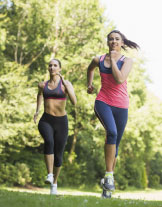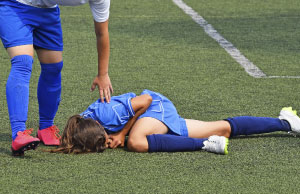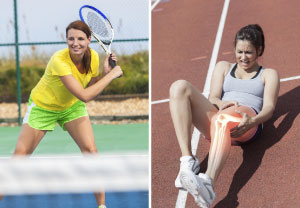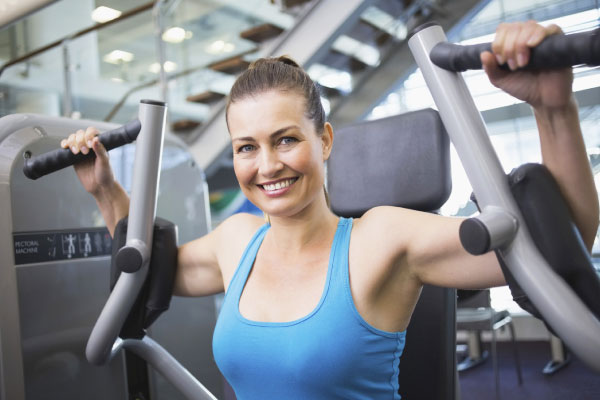Many of us resort to a favourite sport to pack in some fun and a cardio-like workout. For a safe game or workout, Behnaz Sanjana looks at how to dodge and tackle sports injuries.
A round of tennis, golf or basketball or even just cycling by the beach after a long day at work can be a great stressbuster. Being active goes a long way towards keeping your circulation from getting sluggish, your ticker healthy and your bones in top condition. Not to mention the rush of endorphins that puts you on a happy high and the sense of achievement and heathy competition that come with it. This holds true for children as well. But, as with all things in life, this has a flip side to it – injuries.
Dr Maik Priester, orthopaedic consultant at the German Orthopaedic Hospital, specialises in arthroscopic surgery and sports medicine. He tells us how we can continue playing and keeping healthy without the danger of injury.
 “Sports injuries are injuries related to playing sports or exercising. Sometimes they happen when people are not fit enough for the activity they choose or did not warm up properly before playing. Sometimes they happen even to the fittest of athletes due to trauma or interaction with other players,” says Dr Priester.
“Sports injuries are injuries related to playing sports or exercising. Sometimes they happen when people are not fit enough for the activity they choose or did not warm up properly before playing. Sometimes they happen even to the fittest of athletes due to trauma or interaction with other players,” says Dr Priester.
Sports injuries vary in forms and grades of severity such as sprains and strains, muscle tears, dislocations and fractures. They can be classified as acute or chronic. An acute injury happens suddenly while playing sports; it is usually associated with a traumatic event. A chronic injury can also be defined as an overuse injury. It normally develops slowly, is persistent and lasts for a long time.
The pain is less compared to an acute injury – one of the reasons it is often ignnored.
Dr Priester warns that, over time, the symptoms build up to a point where they could restrict a normal lifestyle.
So what can a sports enthusiast do to avoid injuries? “Prevention is an important part of sports medicine. The risk of getting injured can be reduced by warming up properly before doing exercises,” says the doctor. He also goes on to warn that one must not push the body beyond its current fitness level.
Incorporating strength training and stretching into your exercise programme helps to prevent injury. Adequate hydration maintains health and minimises muscle cramps. It is also important to wear properly fitted protective equipment, including helmets, pads, shoes and mouth guards whenever necessary.
 Many sports experts also recommend playing different sports or different positions in your game throughout the year. Taking a break from the sport helps muscles to recover from use and prevent overuse injuries. Resting well and taking good care of any injuries, however minor, can really help you to keep at your game.
Many sports experts also recommend playing different sports or different positions in your game throughout the year. Taking a break from the sport helps muscles to recover from use and prevent overuse injuries. Resting well and taking good care of any injuries, however minor, can really help you to keep at your game.
Dr Priester advocates learning the correct techniques of your sport and seeking help from a qualified coach to improve them. Like a warm-up, a proper cool-down routine is as important to help the body recover from rigorous activity.
But some things are beyond anyone’s control and, if you’ve had a mishap while playing, what do you do? Dr Priester suggests that we always remember RICE – rest, ice, compression and elevation. Rest the injured body area. Cool it with ice or cold packs for 15-20 minutes, three to four times per day to reduce pain and swelling. Wrap the injured area with an elastic bandage to apply compression to decrease swelling. Elevate the sore area on a pillow above the level of your heart to help minimise swelling. These are the guidelines for immediately attending to simple injuries on the field or at the gym. However, if the injury seems more serious, or if symptoms get worse, it’s paramount to seek treatment from a doctor.
 “The treatment of sports injuries varies depending on how severe the injury is and what body part is affected. Applying the RICE method is a good start. In general, nonsteroidal anti-inflammatory drugs [like diclofenac or ibuprofen] help to reduce pain and inflammation,” says the doctor.
“The treatment of sports injuries varies depending on how severe the injury is and what body part is affected. Applying the RICE method is a good start. In general, nonsteroidal anti-inflammatory drugs [like diclofenac or ibuprofen] help to reduce pain and inflammation,” says the doctor.
“Sometimes immobilisation of a joint with a cast or special brace is necessary for a short period of time. Physiotherapy is very helpful to recover from a sports injury and to get you back to normal life. Depending on the injury, special injections [for example painkillers, cortisone or others] have great benefits. In severe cases even surgery might be required.”
It is important that you are comfortable with the treatment prescribed by your doctor. It’s best to discuss all your options with him or her, get second opinions and go ahead with what suits you best, of course in close collaboration with your treating doctor.
Today, women are excelling in sports like never before. But our bodies are more prone to injury due to anatomic and genetic differences in biomechanics, hormones, musculature, flexibility, bone structure, proportion of lean to fat tissue and alignment, Dr Priester tells us.
“For example, women are up to six times more likely to suffer from overstretching or tearing of the knee ligament than men. But don’t get me wrong. Engaging in sports has a lot of benefits. It increases agility and strength, burns calories, improves mood and confidence; just to name a few. All women are encouraged to stay active regardless of age.”


































